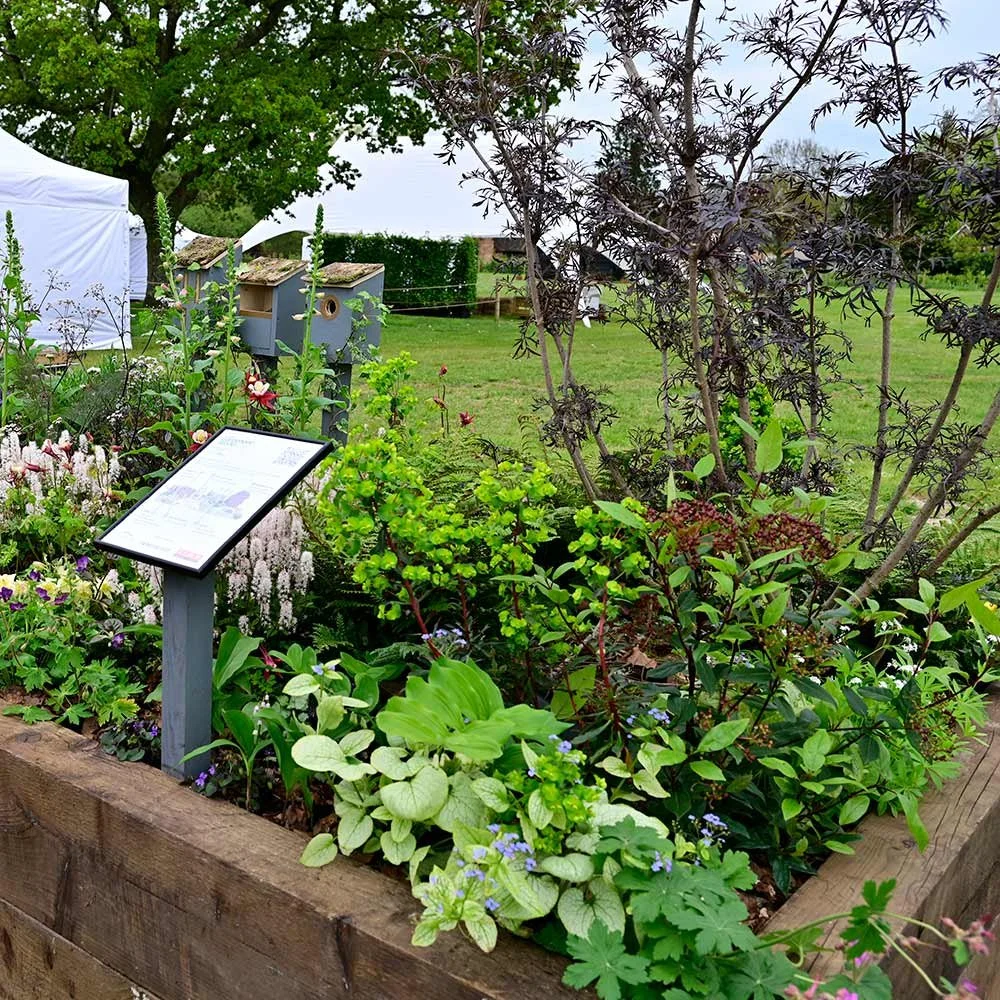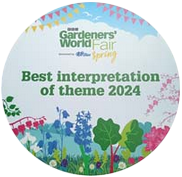BBC GARDENERS’ WORLD
Spring fair 2024 - the synthesis border







Design and build constraints:
Short time frame to build and dismantle show border
Managing plant timings to ensure they are in peak bloom
Pamela's inspiration for The Synthesis Border at Gardeners' World Spring Fair 2024 draws on her gardening experience from the last 25 years, 22 of which have been in her current Surrey based woodland edge garden. Pamela says: It's now more important than ever to be gardening for nature, not just ourselves. I've always gardened organically and I try to encourage as much wildlife into the garden as possible, being rewarded with regular sightings of bats, owls, wood mice and stag beetles. The Synthesis Border shows that by bringing together a range of habitats and plants that it is possible even in a small space to create homes for wildlife and still have a border which looks beautiful.
The border achieved both a Gold and Best Interpretation of Theme awards.
Sponsored by:
The border aimed to create a series of habitats of woodland edge, hedgerow, dry stone wall, log pile, meadow and water. Layered planting is a mixture of native and non-native plants with a woodland edge feel.
1. Hedgerow
A dead hedge created from copiced Hazel and Cornus will sustain much wildlife whilst a young hedge is establishing. Birds and hibernating insects will make use of hedgerow and butterflies will appreciate the shelter.
2. Dry-stone wall
The dry-stone wall gabion seat has been created from Purbeck gabion rock, a naturally occurring limestone on the Isle of Purbeck in Dorset. Reptiles and invertebrates will appreciate the reflected warmth from the stone.
3. Woodland edge
Having a range of planting from trees through to shrubs, perennials and bulbs allows birds, butterflies, mice and hedgehogs shelter and nesting sites.
4. Water
Adding water to a garden is a sure fire way of encouraging wildlife in. Dragonflies, damselflies, newts, frogs and toads will hopefully be regullar visitors to the water. Hedgehogs, birds and bees will also benefit. Adding pebbles to the water aids safe access for creatures and a landing pad for insects.
5. Pocket Meadow
A pocket size mix of grasses and perennials to create a mini meadow offering food and shelter for passing pollinators and wildlife.
6. Log pile
Frogs, toads, newts, centipedes and beetles will be encouraged into log piles in the shade, whilst log piles in the sun provide a nesting site for solitary bees.







